Welcome to Grid Brief! Today we’re looking at power generation in America’s monopoly utility areas.
Monopoly Area Monday
Let’s start with a look at generation nation-wide.
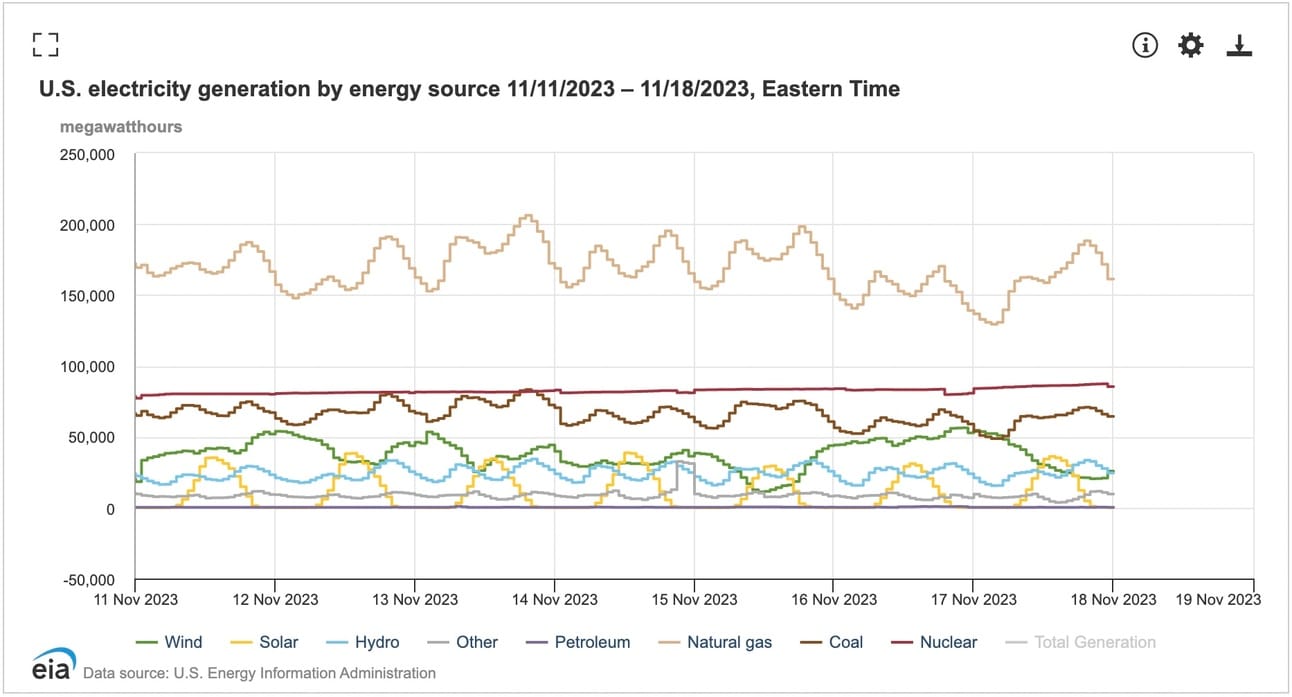
Natural gas, nuclear, and coal served up the majority of America’s power generation. Wind appears to have had a relatively stable week as well.
And here’s a map to orient you as we move through the monopoly areas.

Carolinas
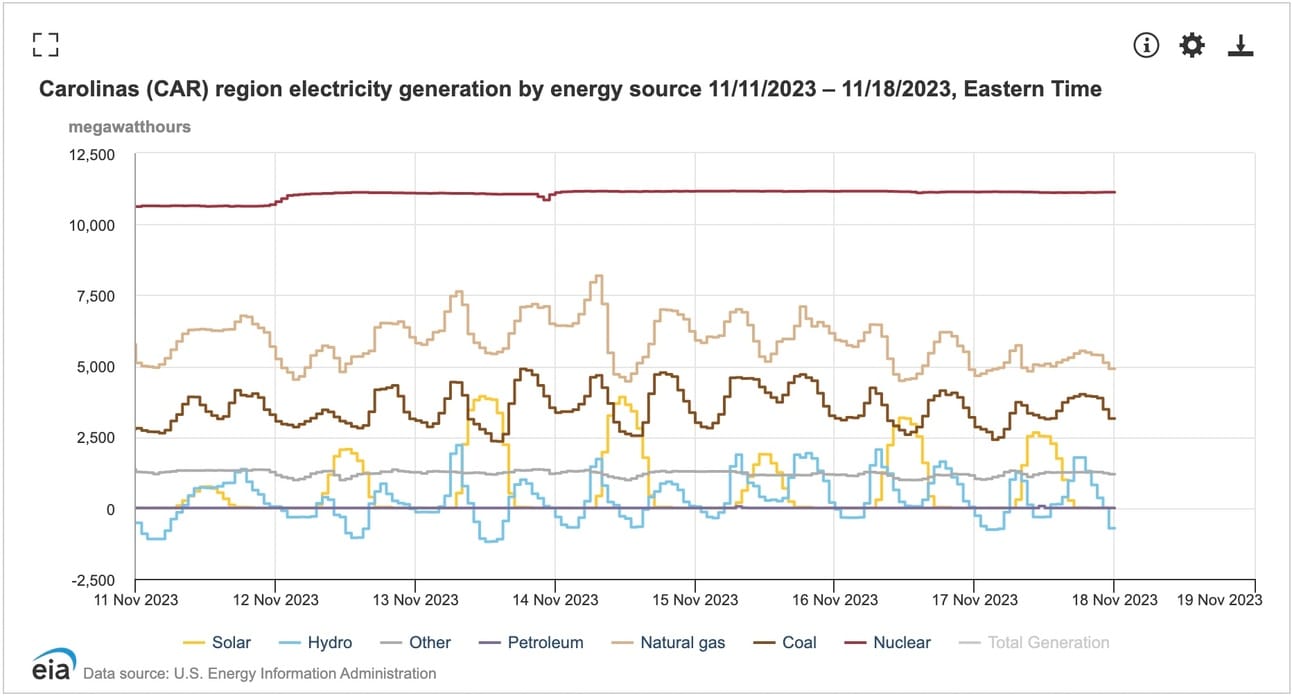
Nuclear, natural gas, and coal were the major providers in the Carolinas. Solar had a very productive week as well—notice that it punched above coal thrice.
Tennessee Valley Authority
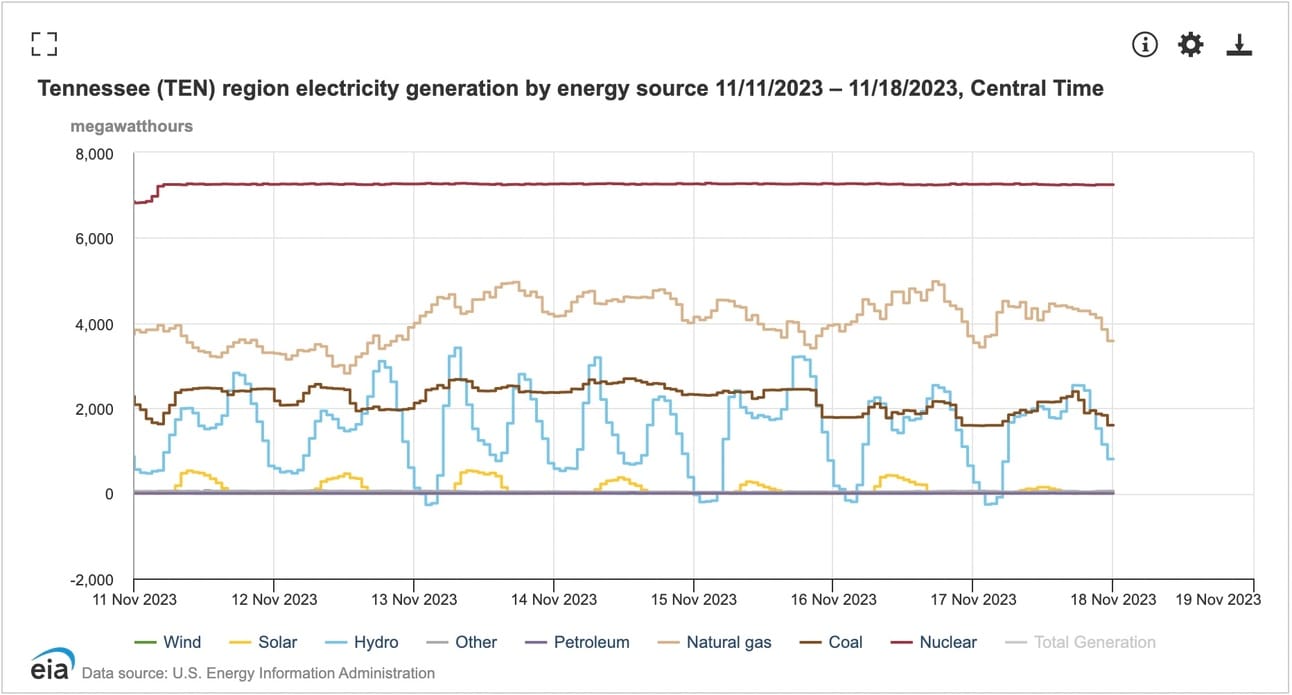
Nuclear, natural gas, coal, and hydro kept America’s largest public utility humming.
Last year during Winter Storm Elliott, the TVA blacked out for the first time in ninety years. The culprit wasn’t a lack of power, but equipment failure. This year, the TVA has prepared its entire fleet to handle 20 mph winds and -20 degree temperatures for at least 48 hours.
Southeast
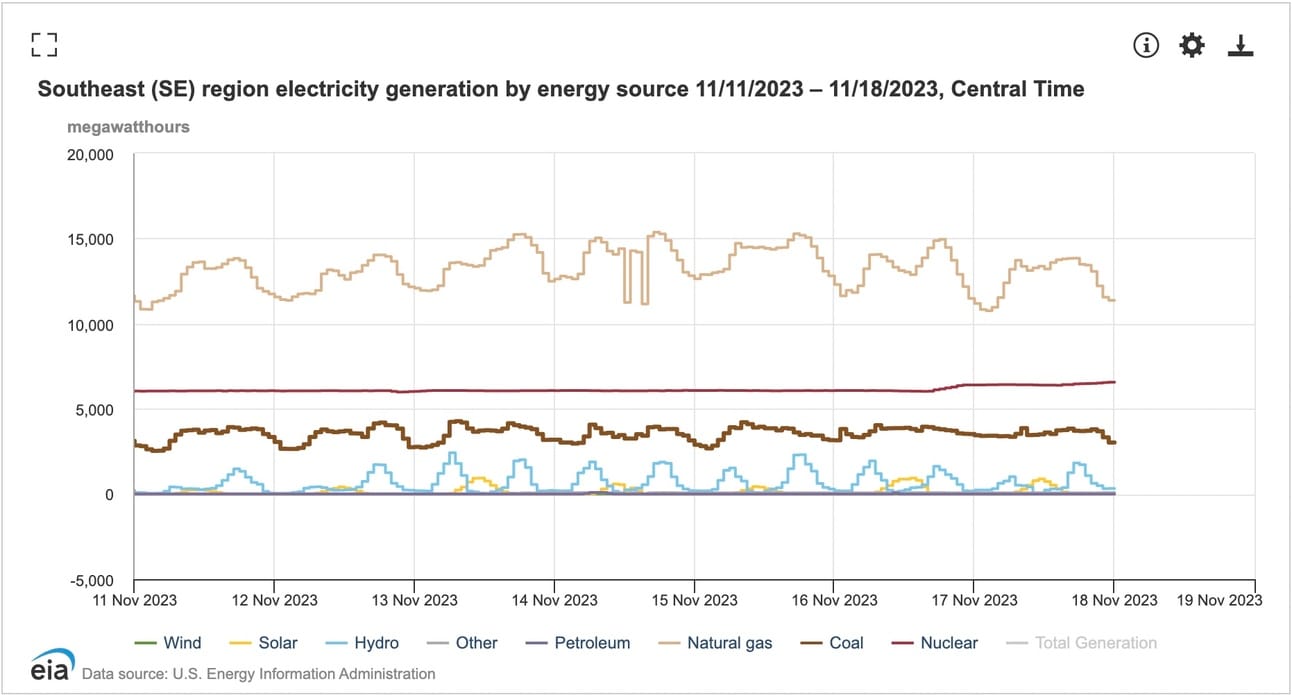
Natural gas, nuclear and coal were the top three generators in this region of the country.
According to the North American Electric Reliability Corp., parts of the Southeast are at an elevated reliability risk in extreme weather this winter. While the Southeast has enough power on deck for extreme cold, equipment failures are still possible.
Florida
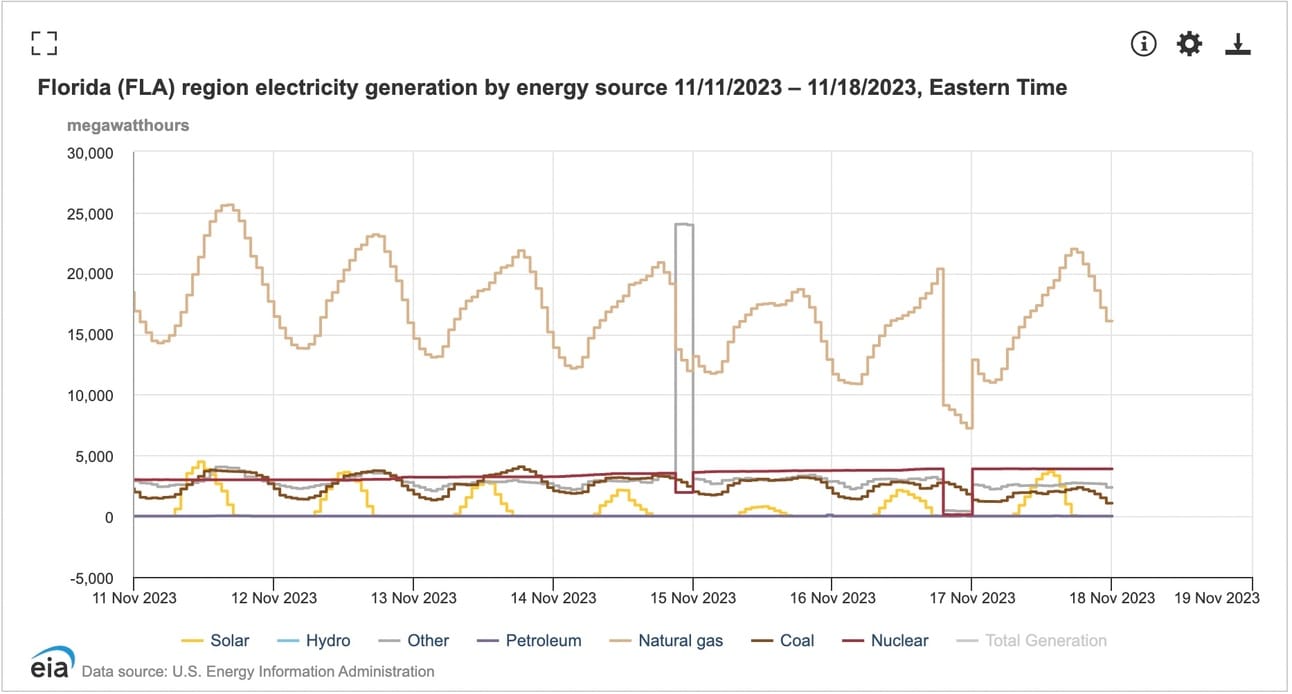
Florida had an interesting week. As ever, natural gas was the main generator in the Sunshine State. But at the end of the 11th, a demand surge that triggered what appears to be a massive influx of “other,” a blanket term for a smorgasbord of smaller generators.
Southwest
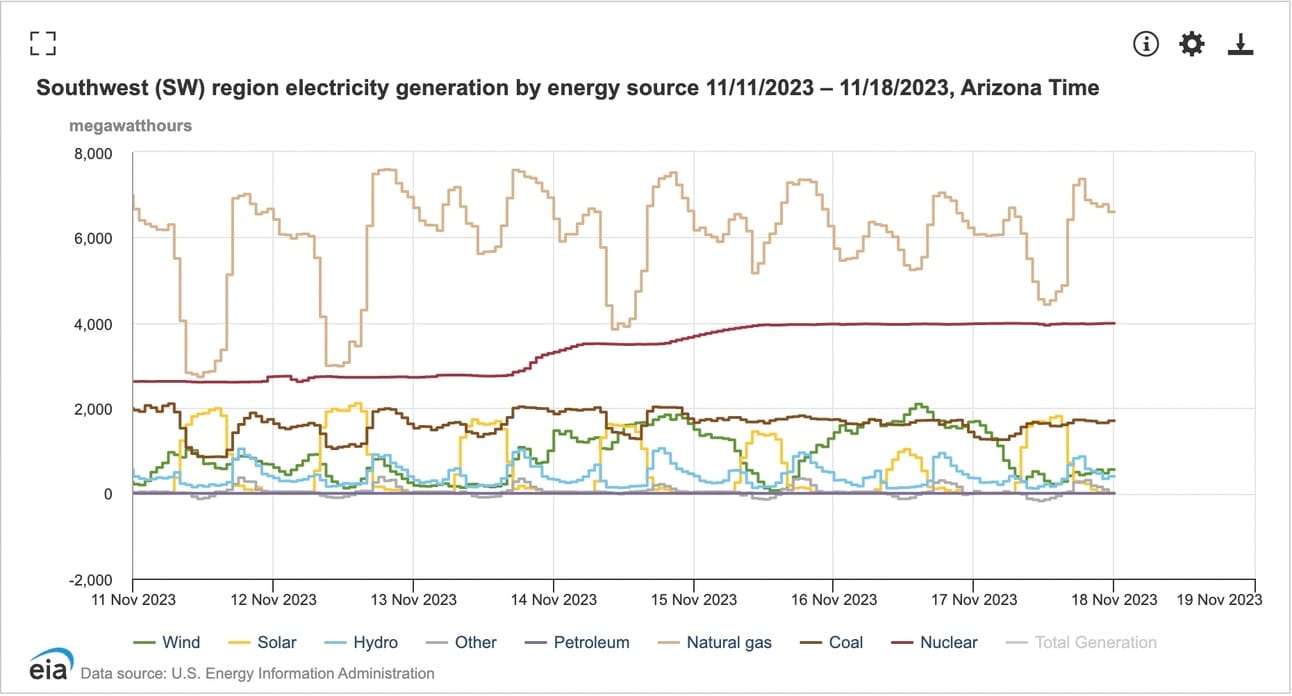
Natural gas and nuclear were the two major generators in the American Southwest’s monopoly regions. Coal, solar, and wind duked it out for third place.
Northwest
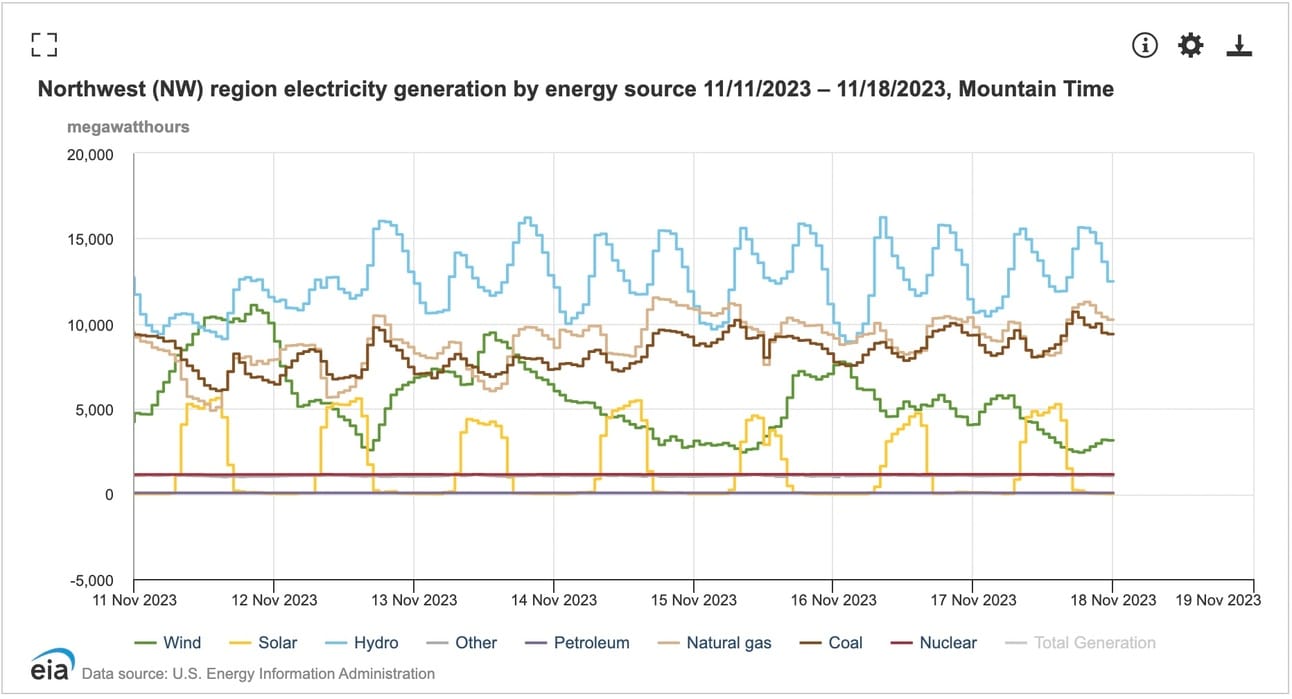
Hydro was the big player in the American Northwest. Wind surged in and out while natural gas and coal swapped places between second and third.
Share Grid Brief
We rely on word of mouth to grow. If you're enjoying this, don't forget to forward Grid Brief to your friends and ask them to subscribe!
Conversation Starters
Russian gasoline is back on the market. “Russia has lifted restrictions on gasoline exports, the energy ministry said on Friday, after scrapping most restrictions on exports of diesel last month, saying there was a surplus of supply while wholesale prices had declined. It said it could reimpose export bans if necessary, adding that stocks of gasoline had risen to around 2 million metric tons,” reports Reuters. “‘Over the past two months, while maintaining high volumes of oil refining ... , saturation of the domestic market has been ensured and a surplus in the supply of motor gasoline has been created, including in the exchange sales channel,’ the ministry said on Friday. ‘A decision was made to terminate the temporary ban on the export of motor gasoline.’”
Ørsted quits another offshore wind project, this time in Norway. “Orsted A/S has withdrawn from a partnership developing offshore wind projects in Norway as the company grapples with big losses resulting from rising costs,” reports Bloomberg. “Orsted quit a consortium with Fred. Olsen Renewables AS and Hafslund Eco citing ‘a prioritization of investments’ in its portfolio, according to the company. The pullback is a further sign of how the world’s largest developer of wind farms is scaling back after being forced to cut some US projects, which resulted in a third-quarter net loss.”
Green innovation is coming to a Norwegian shipping giant. “Norwegian shortsea liner Viasea Shipping has announced plans to build a pair of hydrogen-powered containerships. The Moss-headquartered company, established in 2016, has secured NOK171.8m ($15.4m) in funding from Norwegian government enterprise Enova for the project.
The vessels will be deployed on Viasea’s existing routes between Norway and northern Europe,” reports Splash 247. “Viasea engaged The Norwegian Ship Design Company to develop the ship concept based on scaled-up solutions of technology developed under the designation “Powered by Nature,” which the company has developed in collaboration with shipowner Egil Ulvan Rederi. The two ships will initially operate on a combination of hydrogen and diesel, equipped with two large rotor sails, a battery pack, and a range of other energy-efficient measures.”
Crom’s Blessing

Interested in sponsoring Grid Brief?
Email [email protected] for our media kit to learn more about sponsorship opportunities.